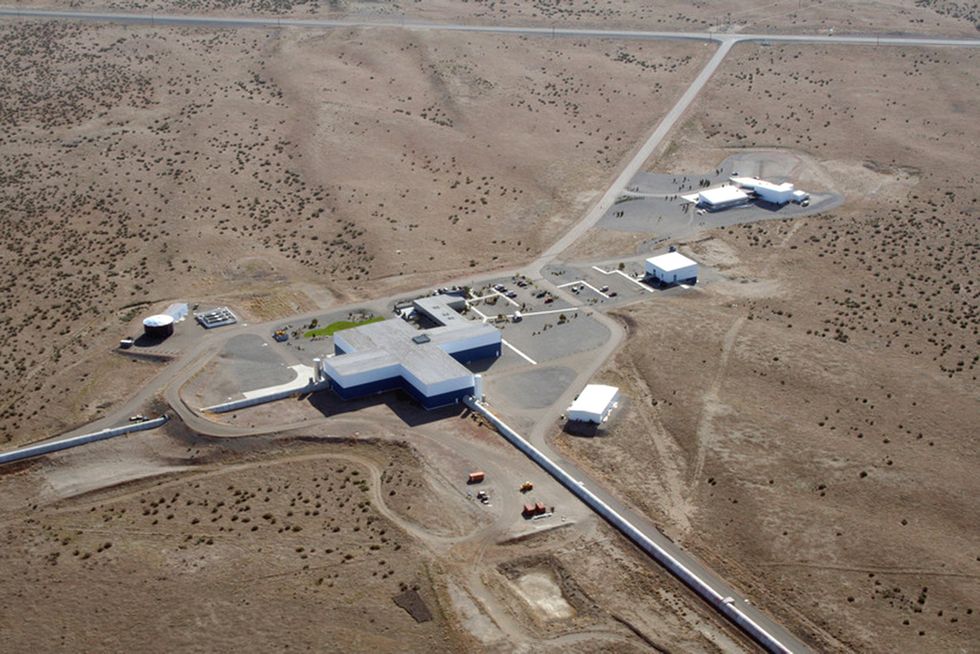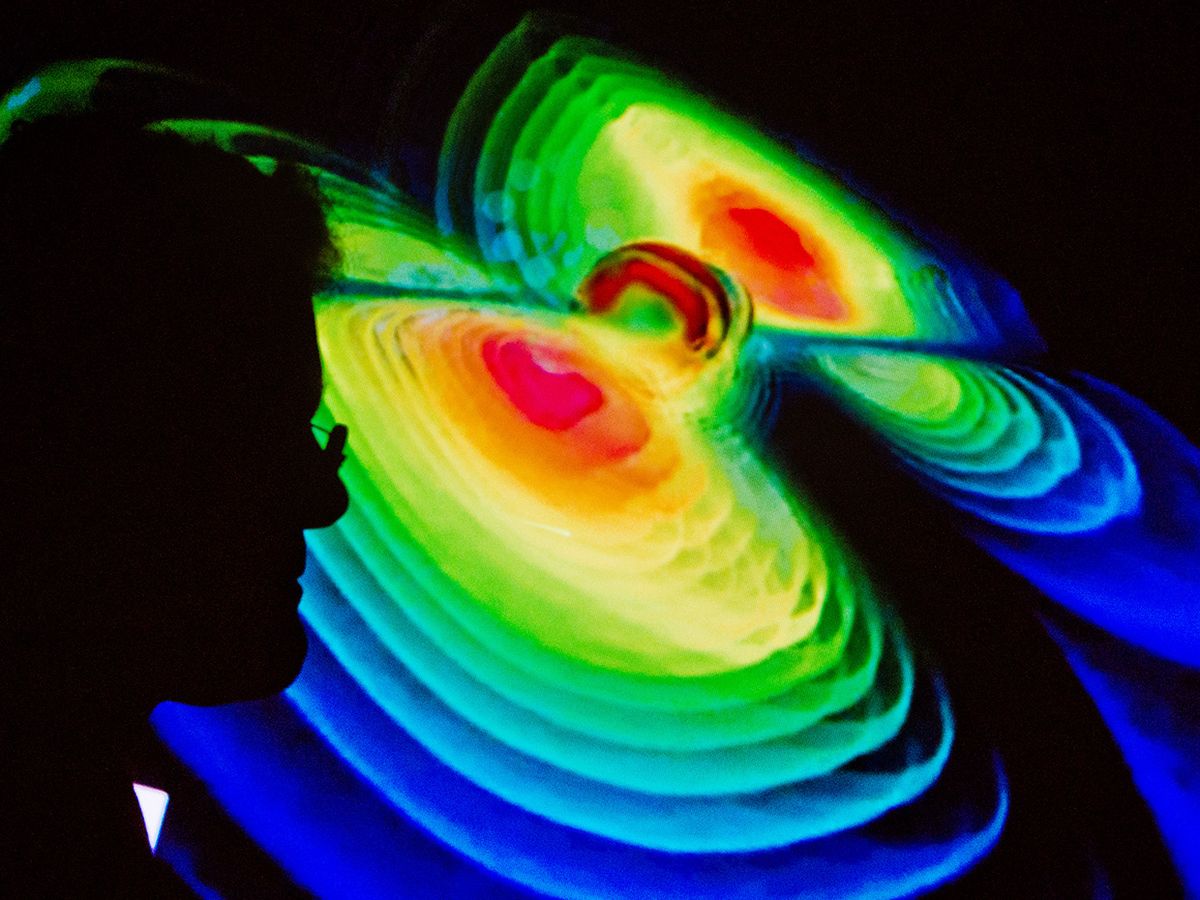THE INSTITUTE In 1916 Albert Einstein predicted the existence of gravitational waves—ripples in space-time (a conceptual model of how the universe works)—in his general theory of relativity. But it wasn’t until 2015 that the Laser Interferometer Gravitational-Wave Observatory, using a specialized interferometer in observatories in Hanford, Wash., and Livingston, La., proved the waves exist. The device merges two or more sources of light to create a measurable interference pattern, according to the LIGO website .
The interferometer was designed in 1972 by Rainer Weiss, a physics professor at MIT and a LIGO cofounder. LIGO worked in collaboration with the Virgo observatory in Pisa, Italy—which used a similar interferometer design. Since that first detection, LIGO and Virgo have recorded gravitational wave events generated by 10 pairs of merging black holes and two pairs of colliding neutron stars, according to the LIGO website.
LIGO’s and Virgo’s work has also inspired the formation of a new field called multi-messenger astronomy. It is the study of various events and bodies in the solar system through messenger particles, such as cosmic rays, gravitational waves, and photons, according to a paper on the field from Cornell.
On 3 February, Weiss’s interferometer design was commemorated with an IEEE Milestone in IEEE regions 5, 6, and 8. It is the first time a Milestone has been installed in three different regions. The IEEE Baton Rouge (Louisiana), Richland (Washington), and Italy sections sponsored the nomination.
Administered by the IEEE History Center and supported by donors, the Milestone program recognizes outstanding technical developments around the world.
“LIGO’s and Virgo’s research on gravitational waves provided a completely new window in observing the universe,” Miriam Luizink, director of the Institutes Organization of the Dutch Research Council (NWO), said during the dedication ceremony on 3 February. “It brings deep and significant answers to the fundamental questions of space-time, our universe, its origin, and its destiny.”
The NWO's Netherlands National Institute for Subatomic Physics joined the European Gravitational Observatory in 2020. EGO was founded 20 years ago near Pisa by the Italian National Institute for Nuclear Physics and the French National Center for Scientific Research. It hosts the Virgo observatory.
The virtual IEEE Milestone dedication ceremony is available on IEEE.tv.
A DIFFICULT QUESTION
When Weiss joined MIT in 1967 as an assistant professor of physics, the department asked him to teach an introductory course on general relativity. But he knew little about the subject, according to a 2017 article about the physicist in MIT News. When his students asked him to explain how physicist Joseph Weber supposedly detected gravitational waves using aluminum cylinders, Weiss found that he couldn’t.
Weber’s device consisted of cylinders that were 2 meters long and 1 meter in diameter, as well as several antennae. He claimed that when the device detected gravitational waves, the cylinders would vibrate. No one in the scientific community had been able to replicate Weber’s results, which have since been discredited, according to a 2020 article about Weber on the American Physical Society website.
Weiss, along with his students, designed their own machines to detect gravitational waves. His L-shaped interferometer eventually became the one that detected the waves for the first time.
His design called for a device that had two arms. Mirrors were suspended at the arm ends. When a laser was aimed down the length of the arms, it would bounce off the mirrors and back up each arm. The laser beams would take the same amount of time to arrive back where they started. Weiss’s theory was that if a gravitational wave passed through the interferometer, it should move the position of the mirrors slightly—which would change the amount of time it took for the laser beams to arrive back up the arms.
Weiss refined the design and built a 1.5-meter prototype to test his theory. He found the longer the interferometer’s arms, the more sensitive its optics were, leading him to believe his design would work if built to large enough dimensions.
THE BIRTH OF LIGO

It wasn’t until 1976 that Weiss’s theory started to become a reality. He teamed up with physicist Kip S. Thorne, who started his own gravitational wave experiment research group at Caltech. The two schools formed a collaboration.
Weiss, Thorn, and physicist Ronald Drever, who was a member of the team at Caltech, founded LIGO in the early 1980s. With the help of experimental physicist Barry C. Barish, the three men refined the dimensions and scientific requirements for an interferometer sensitive enough to detect a gravitational wave. Barish, who worked at LIGO as a principal investigator, was promoted to director of the project in 1994.
In the mid-1990s, LIGO received financial backing from the U.S. National Science Foundation (NSF) and erected its interferometers in Hanford and Livingston.
The interferometers—the largest ever built—had two 4-kilometer-long arms with a suspended mirror at the end of each that was 25 centimeters tall and 10 cm thick.
In 1997, under Barish’s guidance, the LIGO Scientific Collaboration was established. It brought together international institutes and research groups to search for gravitational waves. During the IEEE Milestone dedication ceremony, Barish said that “scientific expertise is not in a single place in the world” and that LIGO “leaned heavily on international collaboration and contributions.”
The two LIGO observatories detected the first gravitational waves on 14 September 2015, at 5:51 a.m. EST. The scientists picked up a faint wobble in the observatories and confirmed that the interferometers had been microscopically stretched by “just one 10,000th the diameter of a proton,” according to the 2017 MIT News article. The distortion happened because of passing gravitational waves, which travel at the speed of light.
The signal was the first direct detection of a gravitational wave by an instrument on Earth. Virgo discovered the waves were produced by the merger of two black holes—an event that occurred 1.3 billion years ago, according to the MIT News article.
Weiss, Thorne, and Barish received the 2017 Nobel Prize in physics for their work.
Reflecting on the achievement during the Milestone dedication ceremony, Thorne said the project helped him “understand the power of collaboration and appreciate the different skills everyone brought to the project.”
“I hope our work inspires young people to pursue science,” he said. “I think that’s one of the most important things we can do as scientists.”
IEEE Fellow Sethuraman Panchanathan, director of the NSF, said at the virtual dedication ceremony, “The strong partnerships between the LIGO facilities, academic institutions, and the states of Louisiana and Washington were central to this endeavor.”
This article was written with assistance from the IEEE History Center, which is funded by donations to the IEEE Foundation.
IEEE membership offers a wide range of benefits and opportunities for those who share a common interest in technology. If you are not already a member, consider joining IEEE and becoming part of a worldwide network of more than 400,000 students and professionals.
Joanna Goodrich is the associate editor of The Institute, covering the work and accomplishments of IEEE members and IEEE and technology-related events. She has a master's degree in health communications from Rutgers University, in New Brunswick, N.J.



